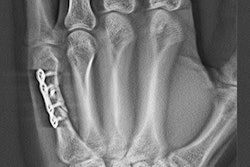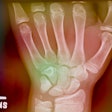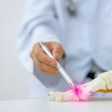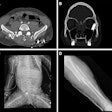Sunday, November 26 | 11:45 a.m.-11:55 a.m. | SSA14-07 | Room S406A
Researchers are investigating digital tomosynthesis for a variety of applications. Weight-bearing radiography of individuals with arthritis of the foot and ankle is one such application, and the topic will be covered in this Sunday morning talk.Weight-bearing radiography is the gold standard for evaluating the alignment of bones in the foot and ankle, but overlapping bones can limit the evaluation of details. A team led by presenter Dr. Alice Ha of the University of Washington theorized that digital tomosynthesis (DTS) could provide quantitative alignment values like radiography in weight-bearing studies, while also providing good details of arthritis as CT does, with plane-by-plane images.
The group recruited 46 patients who were referred for CT scans in simulated weight-bearing positions. These patients underwent weight-bearing radiography and DTS; readers interpreted the images for foot/ankle alignment and the severity of osteoarthritis in each joint. Radiography was considered the gold standard for foot alignment and CT for osteoarthritic details.
The readers found that joints were less obscured when visualized with DTS or CT (4% to 11%) compared with radiography (14% to 34%). DTS had moderate to good agreement with radiography for quantitative measures of foot alignment, which was better than CT in most cases. Agreement was moderate to good for qualitative osteoarthritic details of the tibiotalar joint, with kappa ranging from 0.47 to 0.62 between radiography and CT and from 0.48 to 0.63 between DTS and CT.
Digital tomosynthesis leads to less-obscured joints than radiography, the researchers concluded. It provides reliable quantitative values for foot/ankle alignment compared with radiography and for osteoarthritic bony details compared with CT.



















